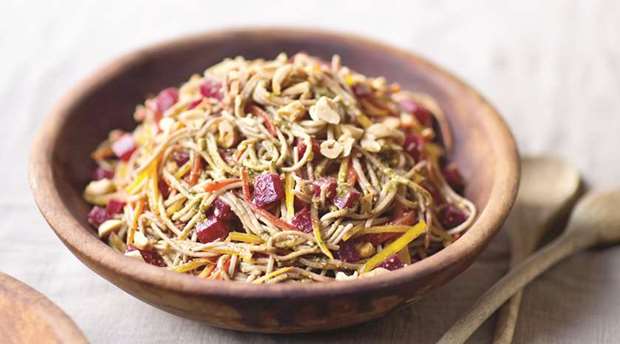My culinary interaction with Japanese cuisine started when I joined a leading luxury hotel in the Indian capital, New Delhi. Sakura, their Japanese restaurant, was said to be the best Japanese restaurant in India and won several awards in a row year after year. The restaurant specialised in “Kaiseki,” the traditional Japanese multi-course dinner. I have always been inquisitive about this traditional and stringent cuisine, wherein every food item has a place on the plate and is served very systematically.
Japanese restaurants around the world are highly appreciated and have been acclaimed to be among the best, which is evident from the many Michelin starred Japanese restaurants around the world.
I will be discussing Japanese cuisine in the coming weeks, starting with today – which is all about soba noodles. When you say “Japanese noodles,” there are high chances that the average person will assume you are talking about ramen. There is no denying that ramen is great – its accessible, economical and tasty, but it is high in salt content and calories, because of all the oil.
Soba, the buckwheat noodles, on the other hand are healthy, light and refreshing. Japanese soba noodles can be served hot and cold and are used in many different dishes. Soba is so popular in Japan that there is a district named for them. These noodles are made from freshly harvested buckwheat, which is sweeter and more flavourful. Cold soba noodles are first boiled like spaghetti and then cooled and served with a soy-based dipping sauce, seaweed, wasabi and other ingredients. After the noodles are finished, it is common to mix the boiling water with the dipping sauce and drink it. Hot soba noodles are served in a variety of broths and can contain vegetables, fish tofu and other ingredients.
Working with buckwheat is not easy – chefs usually take years to master the art of making soba noodles. The basics are to sift and combine buckwheat flour with all-purpose flour and make a dough using water. Roll the smooth dough into a thin circle and roll into cylinder and then cut it thinly to get the noodles. The process of making fresh soba noodles is a popular thing for tourists to watch, along with the flying knives and spatula of the Japanese grill chef.
Once prepared, they should be stored in an airtight container so that they don’t dry up quickly. They can be boiled as required and served fresh.
Soba is the most popular noodle in Tokyo and is a favourite treat on New Year’s Eve in Japan. It gained popularity because a diet of rice is low in thiamine and buckwheat is high in vitamin B. Handmade soba is preferred, but soba can be found dried and many restaurants sell the noodles and broth separately so people can make their dish at home. Fresh soba noodles – usually served cold – have a firmer texture than the hot noodles and are popular in salads. The traditional way to savour this delicacy is to slurp the noodles. Fresh soba is not so easy to find outside Japan but dried noodles are always easily available.
The word soba is most commonly used to refer to soba noodles, but it’s also the Japanese term for buckwheat. There are soba teas and even soba pillows filled with buckwheat hulls. Soba noodles have also become popular in European and American cuisine.
Soba with Beet and Peanut
Ingredients
Soba noodles 200 gm
Peanut butter 1/2 cup
Rice vinegar 1 tbsp
Maple syrup 1 tbsp
Ginger, chopped 1 tbsp
Garlic, chopped 1 clove
Soy sauce 2 tsp
Lime zest 1 tsp
Lime juice 1 tsp
Cilantro 2 tbsp
Cucumber, diced 1 nos.
Bell pepper, julienne 1 nos.
Carrot, shredded 1 nos.
Beetroot, diced 3 tbsp
Peanut 2 tbsp
Method
Cook the noodles in boiling salted water, as per the package instructions. Drain and rinse under cold running water and keep aside.
In a blender, combine peanut butter, vinegar, ginger, soy sauce, garlic, lime juice and cilantro.
Make a smooth puree, add 2-3 tbsp warm water to it if required.
Place the soba noodle in a mixing bowl; toss cucumber, bell peppers, carrots, beetroots, chopped peanuts and the prepared dressing.
Toss to combine well and serve cold, garnished with some cilantro and crushed peanut.
l Chef Tarun Kapoor, Culinary Mastermind, USA. He may be contacted at [email protected]

Soba with Beet and Peanut
